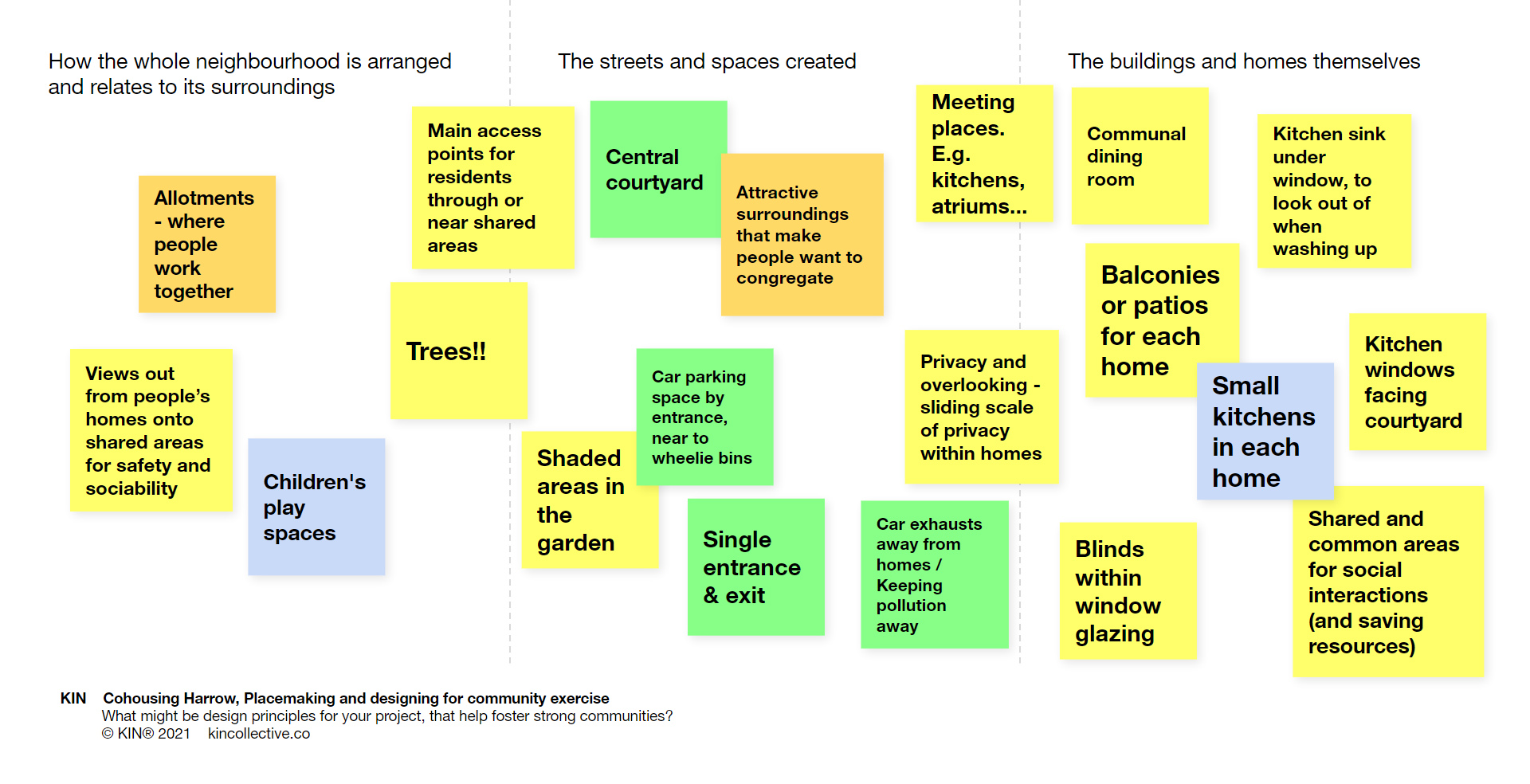Cohousing Harrow and principles for early-stage community-led housing
We’ve been working with community-led housing group Cohousing Harrow to produce a feasibility study for a site they are looking to develop homes on. It’s been such an enjoyable process - all credit to the group for their organisation and energy.
We thought we’d share a little interim update and explain how we approach this kind of early-stage work with groups.

Quite possibly the most exciting and most challenging part of early-stage work with community groups is the fast paced two-way learning. To provide the best advice and outcomes for a group, we need to really understand them, and pretty quickly. At the same time, for the group to get the most out of the process, they need to get their heads around a huge amount of information in a short space of time - from placemaking to planning policy, construction costs to finance options. As developers, architects, and community enablers we help with a lot of the ‘heavy lifting’, but there is still a lot to grapple with for a group going through the process for the first time.
So part of our role is taking a steep learning curve and making it digestible. It’s also to help groups ‘capacity build’ — making sure they come away from the process with learning and new skills, not just a big report. This is how we’ve approached working with Cohousing Harrow, using the following principles:
- Make sure people know where they are in the process and why they are doing each piece of work.
- Give people the building blocks and enable them to make informed decisions.
- Make complex things simple and provide the right amount of information.
- Build relationships and make sure everyone is included.
1. Make sure people know where they are in the process and why they are doing each piece of work.
It may seem obvious, but development is a big long process and it can be easy to get lost or lose focus on what is (or isn’t) important at each stage. We always provide an overview of the whole development process, the stage we are at in more detail (e.g. the steps in doing a feasibility study), and how each bit of work fits into that process (e.g. a certain workshop).


2. Give people the building blocks and enable them to make informed decisions.
Community-led housing isn’t about just handing over summaries and solutions - it’s about enabling communities to meaningfully engage and lead or co-lead the process. We try and start with ‘101’ introductions to key topics to give the group the understanding they need in order to constructively engage. E.g. What to look for during a site analysis and why, what makes a building cost-effective or costly, or things like ‘residual land value’ and ‘subject to planning agreements’ and how they impact the development process. When it comes time to make decisions, we aim to help groups really understand their options and the impacts and trade-offs, so that they can make informed decisions.
Below are a couple of examples of outputs from early-stage exercises we did with Cohousing Harrow. These were part of a ‘Workshop 1’ exploring principles for sustainability, placemaking, and designing to foster community prior to looking at how buildings might be laid out on their site.


3. Make complex things simple and provide the right amount of information.
Wherever possible we want to start at first principles and let groups properly explore and understand topics. However, sometimes there are complex decisions with many many moving parts. Here, we work hard to create workshops/exercises that get to the heart of a matter, with just the right amount of information so they don’t overwhelm. In other cases (e.g. complying with some legislation), a group may prefer their professional team to provide professional judgement on an issue.

4. Build relationships and make sure everyone is included.
The floor plans and spreadsheets are important, but above all community-led projects are about people. We use ice-breaker exercises and regular ‘check-ins’ at the start of meetings to help people get to know each other and give people the opportunity to say the little but important things that might not get mentioned otherwise, like ‘I’m having a really hard week so I might be a bit distracted today’ or ‘I’m really excited about this next workshop as it’s a subject that’s really important to me’.
We also try and make sure everyone can properly participate. At the very beginning, we ask groups if they have any accessibility needs for meetings. Those could be as simple as minimum font size or maximum length of meetings. We also try to structure workshops to give everyone a chance to contribute - small group exercises are sometimes a good way to do this, giving quieter voices a chance to be heard. We always try and provide time for questions during workshops. And, finally, we regularly ask for feedback so that we can adjust how we’re working to best suit the group.
And finally...
We’ll be sharing some more updates from our exciting work with Cohousing Harrow. You can also find out more information about what they are up to on their Facebook page.
If you’re part of a community-led housing group and are interested in assistance with creating your site-finding brief or carrying out a feasibility study / site appraisal, get in touch. We’d be more than happy to help.
